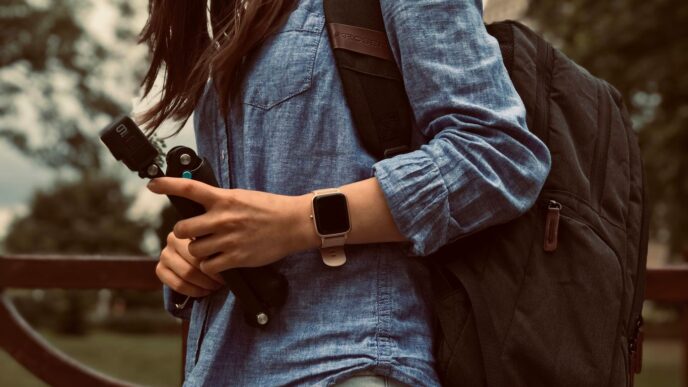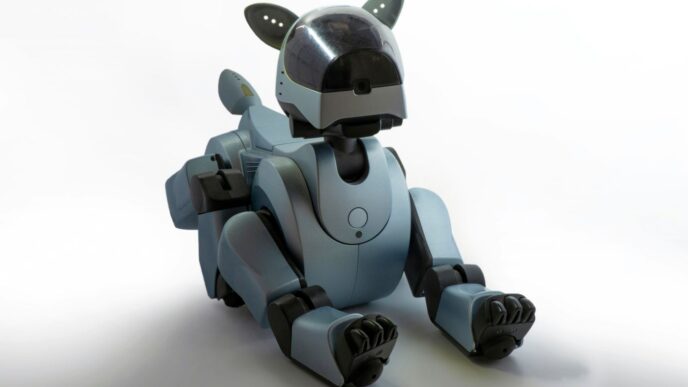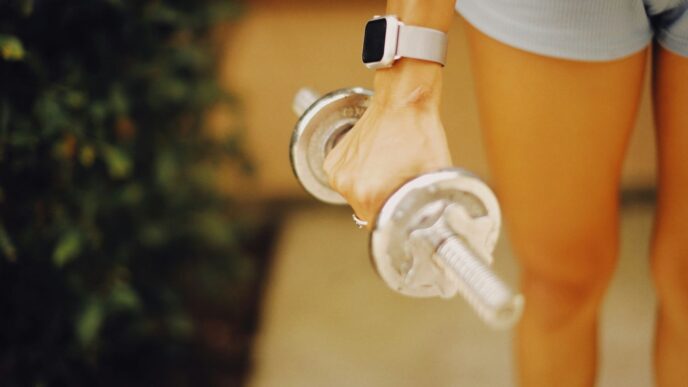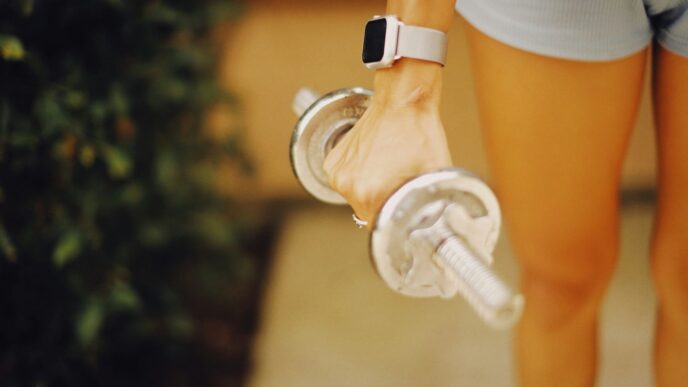Alright, so you’re trying to figure out which of Samsung’s fancy new smartwatches to get this year, right? We’re looking at the Samsung Galaxy Watch Ultra vs. Galaxy Watch 8 Classic in 2025. It’s not always a clear-cut decision, and honestly, for most of us, the differences might not be a huge deal. But let’s break down what makes each one tick, what they’re good for, and if that extra cash for the Ultra is really worth it.
Key Takeaways
- The Galaxy Watch Ultra is built tough for outdoor adventures with a titanium body and better water resistance, while the Galaxy Watch 8 Classic offers a more traditional, stylish look with a stainless steel build.
- While both watches run on Wear OS with Samsung’s One UI Watch, the Classic model brings back the popular physical rotating bezel for easier navigation, a feature missing on the Ultra.
- Battery life is a notable difference, with the Ultra model offering significantly longer use between charges compared to the Classic.
- Both watches share many health tracking features and AI capabilities, including Gemini integration for voice assistance, making them smart choices for wellness.
- Ultimately, the choice between the Samsung Galaxy Watch Ultra vs. Galaxy Watch 8 Classic depends on your lifestyle: choose the Ultra for ruggedness and extended battery, or the Classic for everyday style and the beloved rotating bezel.
Design and Durability Showdown
When you’re looking at the Samsung Galaxy Watch Ultra versus the Galaxy Watch 8 Classic, the first thing you’ll notice is how different they look and feel. It’s not just about aesthetics; it’s about what they’re built for.
Rugged Titanium Versus Classic Stainless Steel
The Galaxy Watch Ultra is built tough. It uses a titanium casing, which is known for being strong but also surprisingly light. This makes it a good choice if you’re planning on doing some serious outdoor activities or just want a watch that can take a beating. On the other hand, the Galaxy Watch 8 Classic sticks with a more traditional stainless steel build. It feels solid and looks more refined, making it a better fit for everyday wear or more formal occasions. The Ultra is definitely the more rugged option here.
Screen Size and Display Quality
Both watches have great screens, but there are some differences. The Ultra generally sports a larger display, which is nice for seeing more information at a glance. Both use AMOLED technology, so you get vibrant colors and deep blacks. The Galaxy Watch 8 Classic, however, boasts a really bright display, hitting up to 3,000 nits. This means you can see your screen clearly even in direct sunlight, which is a big plus when you’re out and about. The Ultra also has a very bright display, but the Classic really shines in this area.
Water Resistance and Build Standards
When it comes to getting wet, both watches are pretty capable. They both have good water resistance ratings, meaning you can wear them swimming or in the shower without worry. The Ultra, however, is built to meet tougher military standards for durability. This means it’s designed to handle more extreme conditions, like dust, dirt, and temperature changes. If you’re an adventurer, this extra layer of protection is a big deal. For most people, though, the standard water resistance on the Galaxy Watch 8 Classic is more than enough.
Performance and Smart Features

When you’re looking at smartwatches, how they run and what they can do beyond telling time is pretty important. This year, both the Samsung Galaxy Watch Ultra and the Galaxy Watch 8 Classic are running on Wear OS, but Samsung’s One UI skin on top makes them feel a bit different. The Ultra seems to be pushing forward with more advanced AI features, which is a big deal for health tracking.
Operating System and User Interface
Both watches use Wear OS, which is Google’s smartwatch operating system, but Samsung adds its own flavor with One UI Watch. This means you get a familiar Samsung look and feel, with easy access to apps and settings. It’s generally pretty smooth, though sometimes you might notice a tiny stutter if you’re really pushing it. The app selection on Wear OS is also pretty good these days, so you’re not short on options for what your watch can do.
AI-Powered Health Insights
This is where the Galaxy Watch Ultra really tries to stand out. It’s packing some serious AI smarts into its health tracking. Instead of just giving you raw numbers, it tries to interpret them for you. Think of it like having a little health coach on your wrist. It can look at your sleep patterns, heart rate, and activity levels to give you more personalized advice. The Galaxy Watch 8 Classic is good at tracking health metrics, but it doesn’t quite go as deep with the AI analysis.
Gemini Integration and Voice Assistant Capabilities
Samsung is really pushing Gemini, their AI assistant, and it’s integrated into the Ultra. This means you can ask it more complex questions and get more helpful answers right from your wrist. Need to plan a route, get a recipe, or even brainstorm some ideas? Gemini on the Ultra can help. The Watch 8 Classic has a standard voice assistant, which is fine for basic commands, but it doesn’t have that same level of conversational AI that the Ultra is aiming for. It’s a noticeable difference if you’re someone who uses voice commands a lot.
Battery Life and Charging Experience

When it comes to keeping your smartwatch powered up, both the Galaxy Watch Ultra and the Galaxy Watch 8 Classic have some interesting points to consider. It’s not just about how long they last, but also how quickly you can get them back to full power.
Comparing Battery Capacity
Samsung has equipped the Galaxy Watch Ultra with a larger 590 mAh battery. This bigger cell is designed to give you more juice, aiming for a solid two to three days of use on a single charge, especially if you’re not constantly using the always-on display. The Galaxy Watch 8 Classic, on the other hand, comes with a 445 mAh battery. While smaller, it’s still expected to provide a comfortable day and a half, potentially stretching to two days for lighter users. Samsung’s official numbers suggest around 30-40 hours for the Classic, depending on display settings.
Real-World Usage Expectations
In practice, how long your watch lasts really depends on how you use it. If you’re a heavy user, constantly checking notifications, using GPS for workouts, or relying on the always-on display, you might find yourself reaching for the charger more often. For the Ultra, Samsung claims up to 60 hours with the always-on display active and 80 hours with it off. The Classic is rated for about 30 hours with AOD on and up to 40 hours with it off. Most users will likely get through at least a full day, and often into the second day, with either watch. However, if you’re doing extensive GPS tracking or making frequent calls via LTE, expect that battery life to drop significantly.
Charging Speeds and Convenience
Neither the Watch Ultra nor the Watch 8 Classic are setting speed records when it comes to charging. Both use a magnetic charger, and you can expect to get about 50% charge in roughly 30 minutes. A full charge for the Watch Ultra takes a bit longer, around 1 hour and 48 minutes, while the Watch 8 Classic might be a little quicker, finishing up in about 1 hour and 24 minutes. While not the fastest, this charging speed is generally manageable. If you can place your watch on the charger while you’re getting ready in the morning, you should have enough power to last the entire day, even for sleep tracking. It’s a trade-off: you get decent battery life, but charging isn’t something you can do in just a few minutes.
User Interaction and Navigation
When you’re looking at smartwatches, how you actually use them day-to-day is a pretty big deal. It’s not just about what they can do, but how easy it is to get them to do it. This is where the Galaxy Watch Ultra and the Watch 8 Classic really show their differences, especially with how you control things.
The Rotating Bezel Advantage
For years, Samsung has put a physical rotating bezel on its watches, and it’s a feature many people love. It’s super intuitive. You just twist it around the screen to scroll through menus, adjust volume, or zoom in on maps. It feels really solid and precise, and you don’t even have to touch the screen. This is especially handy when your hands are sweaty from a workout or if you’re wearing gloves. The Watch 8 Classic keeps this beloved feature, making it a familiar and reliable way to get around the watch’s interface.
Programmable Quick Button Functionality
Both watches have a physical button, but the Ultra takes it a step further with a dedicated, programmable ‘Quick Button’. Think of it like a shortcut key. You can set it to launch a specific app, start a workout, or trigger a custom action. This is great for getting to your most-used features fast. For example, you could set it to immediately start your favorite running app or bring up your heart rate data. The Watch 8 Classic has a standard button, but it doesn’t offer the same level of customization for quick access.
Digital Bezel Versus Physical Controls
The Galaxy Watch Ultra, while having a larger screen, opts for a digital bezel experience. This means you’ll be swiping around the edge of the screen or using on-screen gestures to navigate. While it works, it just doesn’t have that same tactile feedback as a physical bezel. The Watch 8 Classic, with its physical rotating bezel, offers a more direct and satisfying way to interact with the watch. It’s a trade-off between a sleeker, potentially more modern look (Ultra) and a tried-and-true, user-friendly control method (Watch 8 Classic). For those who value physical interaction, the Watch 8 Classic definitely has an edge here.
Target Audience and Use Cases
The Adventurer’s Choice
If you’re heading off the beaten path, the Galaxy Watch Ultra is hard to pass up. It’s built with a tough titanium frame and comes packed with features made for people who are always outdoors. If your weekends are about hiking up a mountain, or if you genuinely think rain is just a suggestion, this is the watch that’ll keep up with you. Here’s why folks who are always on the move tend to lean toward the Ultra:
- Titanium body resists knocks, bumps, and drops
- Extra water resistance for swimming, kayaking, or getting caught in a storm
- GPS tracking and barometer for mapping your routes
If you care more about durability than how your watch looks at dinner, this probably fits your wrist best.
The Everyday Wearable
On the other hand, Galaxy Watch 8 Classic fits better into most daily routines. It’s a solid pick if your main plan is work, running errands, or hitting the gym after hours. The design works at an office desk, a coffee shop, or a casual meet-up. Here’s where the Watch 8 Classic shines:
- Stainless steel looks traditional and pairs with almost anything
- More classic, familiar shape that doesn’t scream “sports watch”
- Well-balanced health features without the rugged extras you might never need
Plenty of people just want a smartwatch that blends in and does its job without standing out. The Watch 8 Classic is perfect if that’s what you’re after.
Balancing Features and Price Point
How do you decide which watch works for you? Usually, it boils down to weighing what you actually use against how much you want to spend. Here’s a quick breakdown:
| Feature/Use Case | Watch Ultra | Watch 8 Classic |
|---|---|---|
| Durable Adventures | Best choice | Only basic protection |
| Office & Everyday Looks | Looks chunky | Sleek & traditional |
| Price | Higher | Typically lower |
| Advanced Sports Metrics | Included | Fewer |
| General Fitness Tracking | Yes | Yes |
Not everyone needs extreme durability or extra-long battery life. For most folks, it’s really about the right balance:
- Choose Ultra if you need adventure-ready protection and premium features.
- Pick Classic if sleek looks, a lower price, and versatility matter most.
- Set your priorities by how your days really go, not just because a watch seems cool on paper.
Ultimately, both are strong contenders—it just comes down to what actually matches your routine.
Health and Wellness Tracking
When it comes to keeping tabs on your well-being, both the Galaxy Watch Ultra and the Galaxy Watch 8 Classic are pretty much neck and neck in 2025. They both pack Samsung’s BioActive sensor, which is the heart of their health tracking capabilities. This means you get all the standard stuff covered: workouts, how many calories you’re burning, your general activity levels, and even your stress. Plus, they’re both really good at monitoring your sleep and keeping an eye on your heart rate and blood oxygen levels.
Advanced Health Metrics
Samsung has been putting a lot of effort into sleep tracking, and it shows. Both watches offer personalized sleep coaching, which is neat. They can even pick up on signs of sleep apnea, which is a pretty big deal. Beyond that, you’ve got Vascular Load tracking, which basically looks at your stress levels while you’re sleeping. There’s also something called the Antioxidant Index. To get this reading, you actually have to take the watch off and put your finger on a sensor on the underside. It measures your carotenoid levels, which can give you some idea about your diet and metabolism. It’s not the most convenient thing, but if you’re really into that kind of data, it’s there.
Biometric Data Utilization
These watches are loaded with sensors. You’ll find an accelerometer, GPS, heart rate monitor, gyroscope, barometer, and a blood oxygen sensor. The Ultra also throws in a temperature sensor. They use all this data to give you a picture of your health. For instance, if either watch detects that your stress levels are getting too high, it’ll give you an alert and suggest you take a moment to breathe. There’s also a mindfulness tracker and an energy score to help you gauge your overall state.
Sleep and Stress Monitoring
Sleep tracking is a big focus. Both watches aim to give you detailed insights into your sleep patterns. You can get tailored sleep coaching, and the watches can even detect signs of sleep apnea. For stress, the Vascular Load feature monitors your levels overnight. During the day, if your stress levels spike unexpectedly, you’ll get a notification. This is meant to prompt you to take a break and maybe do a quick mindfulness exercise, which is also built into the watch. It’s all about giving you more information to make better choices for your health.
So, Which Samsung Smartwatch Wins?
Alright, let’s wrap this up. Deciding between the Samsung Galaxy Watch Ultra 2025 and the Galaxy Watch 8 Classic really boils down to what you’ll be doing with it. If you’re out there climbing mountains or exploring the ocean floor, the Ultra’s tougher build and longer battery life might be worth the extra cash. But for most of us, the Galaxy Watch 8 Classic is probably the smarter pick. It still looks good, has that handy rotating bezel that’s actually pretty useful, and packs most of the same tech. You get a lot of the same features without needing the extreme durability, and honestly, it’s a bit easier on the wallet. Unless you’re a serious adventurer, the Classic is likely your best bet.
Frequently Asked Questions
Which watch is tougher, the Galaxy Watch Ultra 2025 or the Galaxy Watch 8 Classic?
The Galaxy Watch Ultra 2025 is built to be tougher. It has a stronger titanium body and can handle being underwater deeper (10ATM) compared to the Galaxy Watch 8 Classic (5ATM). So, if you’re doing a lot of rough activities or swimming, the Ultra is the better choice for durability.
What’s the main difference in how you control the watches?
The Galaxy Watch 8 Classic has a physical rotating bezel that you can turn to scroll through menus and apps. The Galaxy Watch Ultra 2025 doesn’t have this physical bezel; it uses a digital version on the screen. Many people find the physical bezel easier and more fun to use.
Which watch has a bigger screen?
The Galaxy Watch Ultra 2025 has a slightly larger screen, measuring 1.5 inches. The Galaxy Watch 8 Classic has a 1.34-inch screen. Both screens are very bright and clear, though.
How long does the battery last on each watch?
The Galaxy Watch Ultra 2025 generally lasts longer on a single charge, potentially up to 2 days with regular use, or even longer if you use power-saving features. The Galaxy Watch 8 Classic usually lasts about a day to a day and a half, so you might need to charge it more often.
Are there any special new features with these watches?
Yes, both watches have new AI features that can help you with your health and fitness. They also include Gemini, which is like a smart assistant you can talk to for information. Both watches also track health details like heart rate, blood oxygen, sleep, and stress.
Which watch is better for everyday use?
For most people who want a stylish smartwatch for daily tasks, tracking general health, and maybe some light workouts, the Galaxy Watch 8 Classic is likely the better choice. It looks more like a traditional watch and has the useful rotating bezel, plus it’s usually less expensive than the Ultra.














